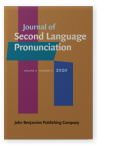Vol. 6:2 (2020) ► pp.209–235
The role of talker variability in the perceptual learning of Mandarin tones by American English listeners
Research on segmentals has suggested that a key component of High Variability Phonetic Training (HVPT) is high talker variability. However, the extent to which high talker variability improves perception of tones is unclear. This study examined the effects of high talker variability on the perception of Mandarin tones (Tones 1–4) by English-speaking listeners. A training paradigm that used multiple talkers (multitalker group) was compared with a paradigm that used one talker (single-talker group). The results showed that the multitalker group outperformed the single-talker group, and they retained their learning better than the single-talker group did for 6 months. Neither group, however, improved their perception of Tone 1 or generalized their learning of monosyllables to disyllables. The results suggest that although high talker variability can effectively improve tone perception, it does not improve the perception of more tone categories or yield generalization of learning to more contexts compared to low talker variability.
Article outline
- 1.High Variability Phonetic Training (HVPT)
- 2.Nonnative perception of Mandarin tones by English listeners
- 3.This study
- 4.Methodology
- 4.1Participants
- 4.2Pretraining assessments
- 4.3Stimuli and apparatus
- 4.4Procedure
- 4.4.1Pretest
- 4.4.2Training
- 4.4.3Posttest/Generalization
- 4.4.4Retention test
- 5.Results
- 5.1Overall performance
- 5.2Individual tones
- 5.3Retention of each tone
- 6.Discussion
- Acknowledgements
-
References
